It hit 120 degrees in this California town. For the homeless, 'it's a miserable life out here'
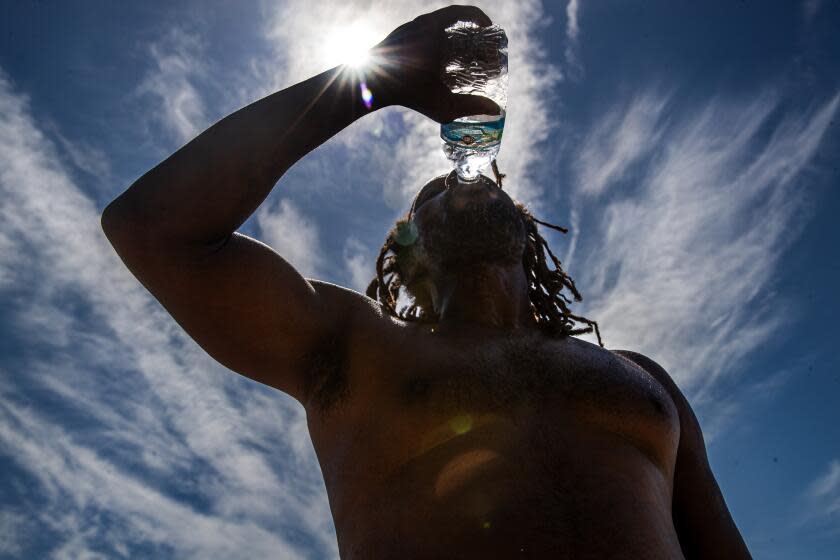
At a homeless encampment dubbed the Lost City, hidden behind a cluster of pine trees off Highway 95, Charles Johnson was sweltering.
He was drenched in sweat, worsening the heat rash on his back and arms. His sunburned skin ached.
He was hungry. He was desperate for water. And he yearned for ice — which he can't keep from melting while living outside, under the unforgiving desert sun.
It was Thursday morning — not yet noon — and the temperature already was in the triple digits in this impoverished desert town of 18,000 on the California and Arizona border.
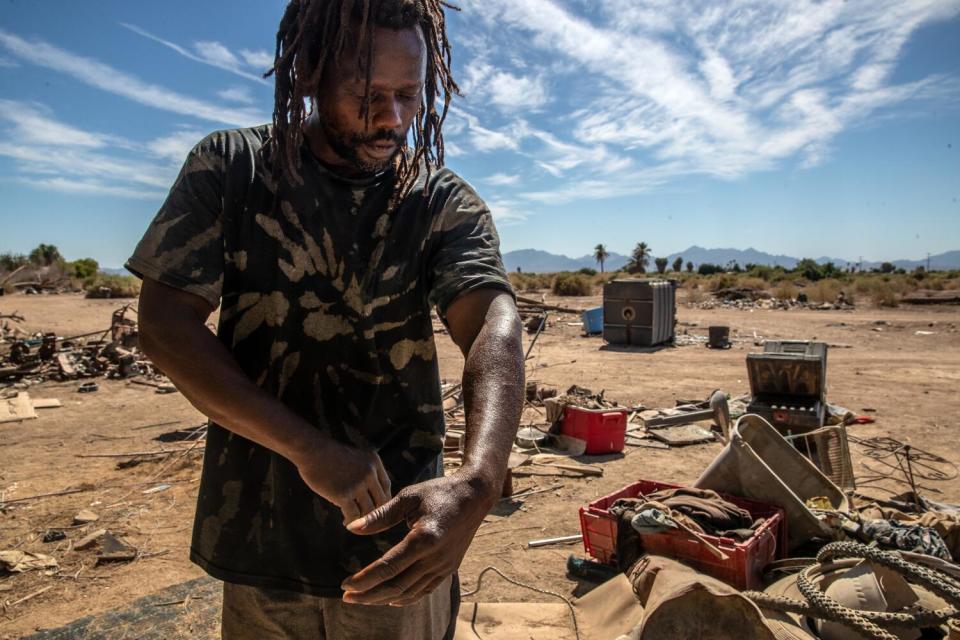
By the end of that day, the temperature here in Blythe would hit 118 degrees. On Friday: 120.
"It feels like the sun is getting closer or something," said Johnson, 52. "It's hot. Way too hot."
Extreme heat — like the record-breaking heat wave that has been cooking the Southwest U.S. in recent weeks — is one of the deadliest consequences of global warming, causing more weather-related deaths in the U.S. than hurricanes, flooding and tornadoes combined.
The risk of heat-related illness or death is especially high for people experiencing homelessness — particularly those in isolated rural towns like Blythe, where there are fewer resources for helping this vulnerable population, whose members often struggle with addiction and severe mental illness.
The risk, like the mercury, is rising. As of Friday, the average high temperature in Blythe for July was 113.7 degrees — just shy of the average high of 114.4 in Phoenix, 150 miles east.
In Blythe, there are more than 100 unhoused people. Most live outdoors. There are no homeless shelters and few cooling centers.
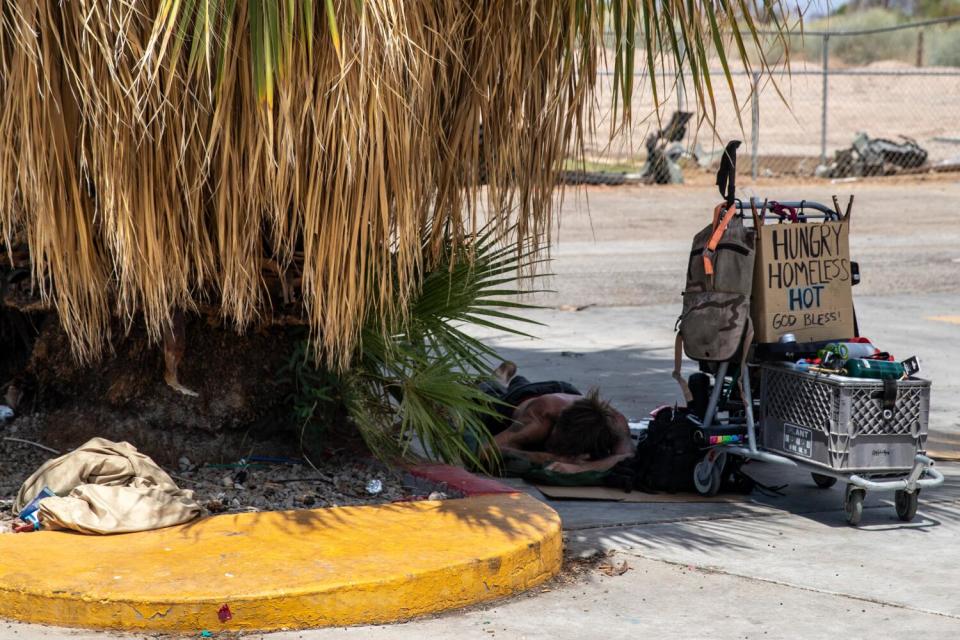
Local resources are scarce, but townsfolk — such as Joshua Lopez-Padilla, pastor of the Blythe Central Seventh-day Adventist Church — are doing what they can to help.
The Bible has plenty to say about trials in the desert. That's where the Israelites wandered for 40 years in search of the Promised Land. And it's where Jesus was tempted by Satan.
Here in the remote Colorado Desert, Lopez-Padilla, 28, and volunteers from his congregation have been driving the streets — passing out food and water, sometimes ferrying people to an air-conditioned church.
The sight of Lopez-Padilla's silver Jeep pulling up to the Lost City encampment on Thursday felt, to some residents, like a miracle — like manna from heaven.
Johnson and Abby Mitchell, 59, who also lives at the encampment, piled into the pastor's back seat. Their weary bodies leaned sideways as Lopez-Padilla drove over dips in the dirt road.
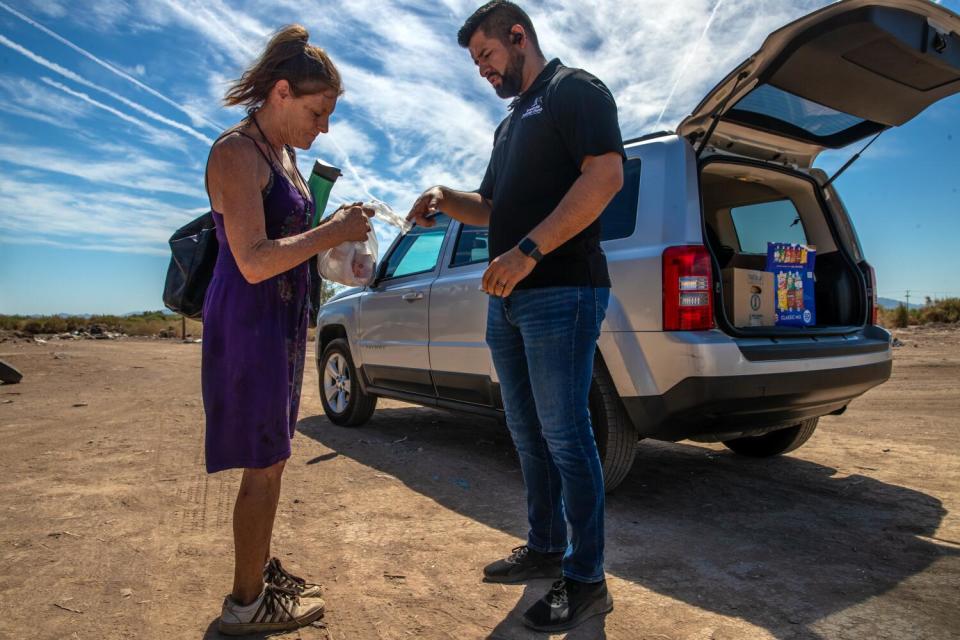
This summer, the Blythe Central Seventh-day Adventist Church has been opening its doors twice a month on Sundays as a cooling center for homeless people.
“The first week we did it, we had 15 people; the next week after that we had 20 people,” Lopez-Padilla said.
Read more: From a one-way flight to sleeping in a parking lot: Diary of a California dream gone sour
For years, the church helped feed homeless people and used the building as a cooling center, but it was sporadic. But now, members hope to do it every month and have been spreading the word to homeless people, government officials and other nonprofit organizations.
Lopez-Padilla hoped to open the cooling center for more days, with longer hours, but funding issues and the cost of electricity limit his ability to do so. He said that with just its regular services, the church spends about $3,000 a month in electricity — an amount that almost surely will be higher on the next bill, which will include the time as a cooling center.
Lopez-Padilla said the cost is increasing even with the use of solar panels.
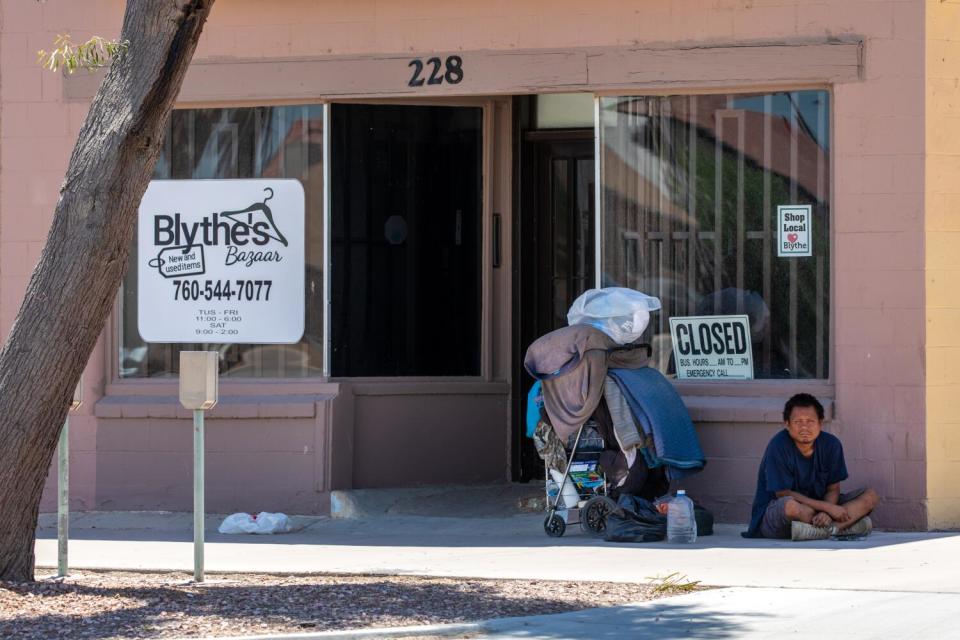
The church is no stranger to helping people in their most vulnerable moments. In 2019, it sheltered asylum seekers from Central America who were dropped off by immigration officials with nowhere to go.
At the church, volunteers served Johnson and Mitchell egg salad sandwiches and watermelon.
As they cooled down, Lopez-Padilla hit the road again.
At Lovekin Boulevard and Donlon Street, two miles from the church, the pastor pulled into the parking lot of a Taco Bell, where he found Heather Hughes, 42, and Mike Byrd, 27.
The two friends sat under the shade of a small tree. Sweat ran down their faces, which were red from the sun.
The pair took bags of food he offered but declined to go with Lopez-Padilla. Hughes said she felt ashamed being a homeless person inside a church. She also assumed she couldn’t bring her pit bull.
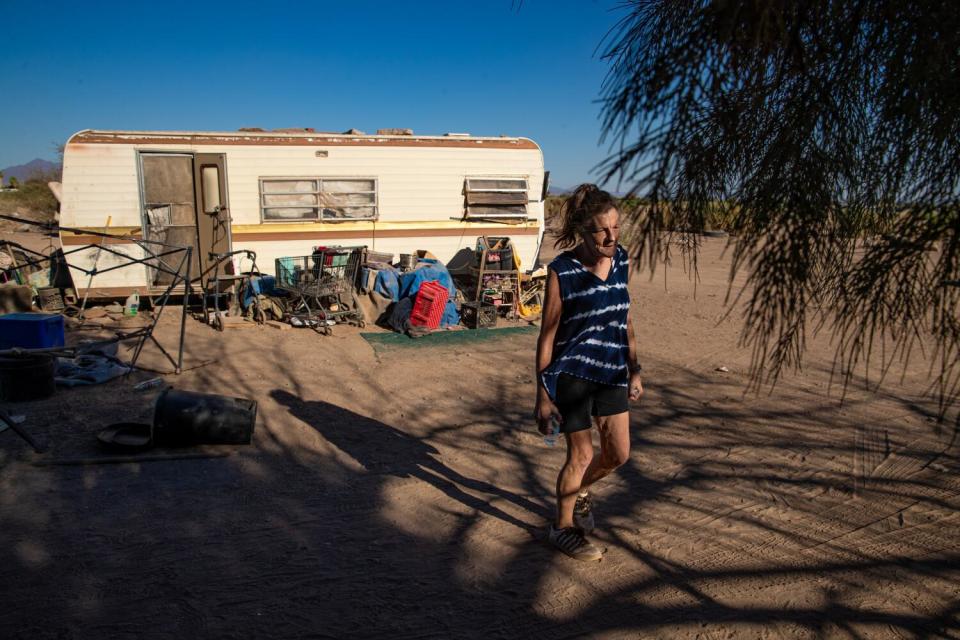
The extreme heat, she said, has been beyond awful.
“I feel like someone threw me in an oven,” she said. “Sometimes I can’t breathe, and I cry most days because I don’t know what to do, it’s so hot.”
Byrd says he sometimes pours water on his head, wears a wet T-shirt and tries to stay hydrated to keep cool. But it’s only a brief relief from the heat.
“Sometimes I feel dizzy,” he said. “It happens four times a day, sometimes three times a week.”
Read more: For Californians who live and work outside, there is little escape from deadly heat
Byrd and Hughes said they sometimes go inside the Taco Bell to cool off, but managers will sometimes tell them to leave after a while.
At the 76 gas station across from Taco Bell, Joanna Diaz said she and other workers help people during the heat on a case-by-case basis.
“If they’re in a really desperate need of help, I’ll let them grab a cup of ice and a drink and pay for it myself,” she said. “I had a family member who was mentally ill and homeless who ended up dying on the street, so I know how hard it is.”
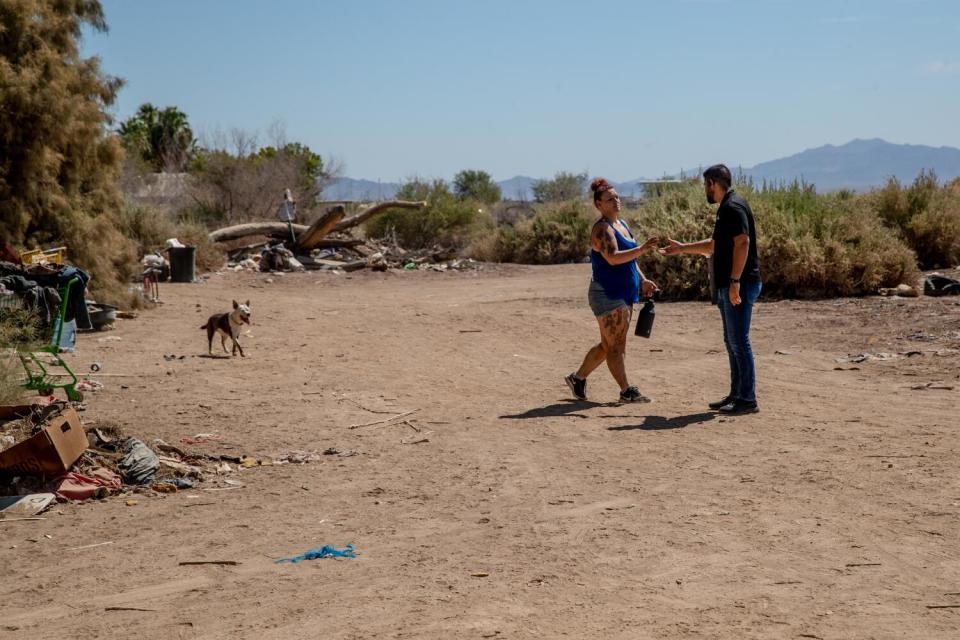
A few days earlier, during the heat wave, a man died across the street from the gas station. Police said he died from a drug overdose, but it was unclear if the heat also played a factor.
At Garcia’s restaurant, a few blocks away, waitress Maricruz Varela, 21, handed a burrito and a cup of water to a homeless man. The man often stops by the restaurant, and sometimes she gives him food and water — but only when he’s calm, she said.
Varela said she’s compelled to help because of the heat.
“I’m living life with air conditioning and they’re out in the street,” she said.
Several unhoused people told The Times last week that there were few places they could go to keep cool. They said that there are no homeless shelters in Blythe and that the most accessible programs and other homeless services are in Indio, 100 miles away.
Read more: L.A. hotel workers endure hours-long commutes, car sleeping to afford homes elsewhere
Riverside County has two outreach workers from its Department of Mental Health who are assigned to help homeless people in Blythe.
But much of the responsibility falls on police and local volunteer groups, said Blythe Police Chief Garth Dale. Although some assistance is received from other organizations in the Coachella Valley, it's limited, he said.
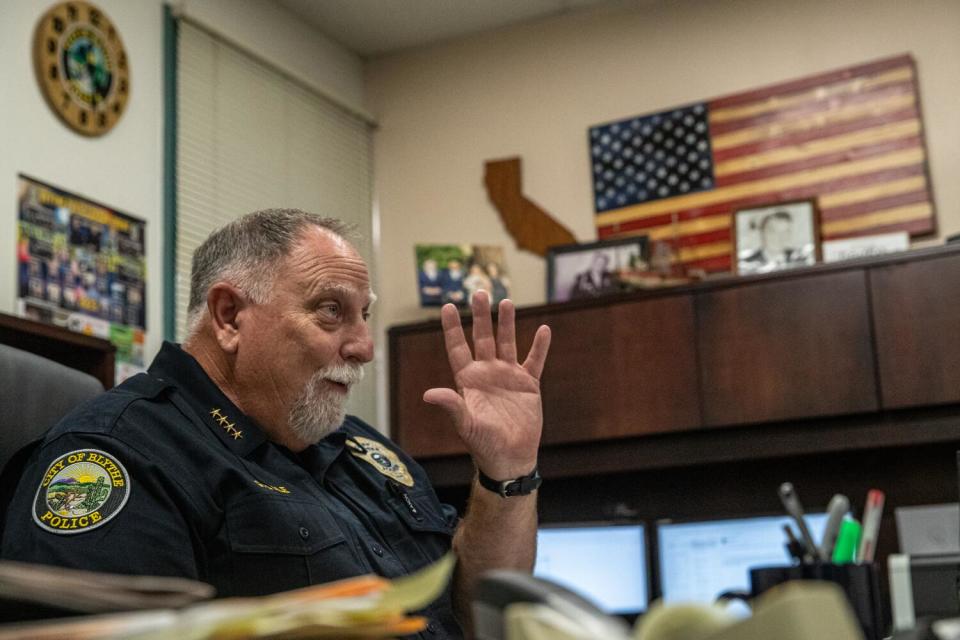
Two years ago, when Dale became police chief, officials and residents told him that traffic and homelessness were top concerns, he said. He launched a quality-of-life program to address both issues, using more than $50,000 in leftover grant money to run a homeless program that enabled one officer to engage with the homeless population four days a week.
He said that, on average, it took officers nine times to engage with a homeless person and connect them with services and other resources, such as obtaining identification cards and drug treatment programs.
The money dried up earlier this year, and now he’s been trying to find ways to fund the program again.
“My goal is to continue this, especially during the summer, because it’s life and death out here,” Dale said. “The desert is beautiful, but can you imagine just being out there for a month. … It’s a bad situation.”
In the meantime, officers try to help homeless people whenever they respond to service calls, he said.
A local government map of cooling centers in vast Riverside County shows several in the Coachella Valley, with only one center in Blythe, at the Palo Verde Valley Transit Agency.
George Colangeli, general manager of the agency, said it receives about five to 10 visitors a day. Most of the time, they are people whose vehicles have broken down on the road.
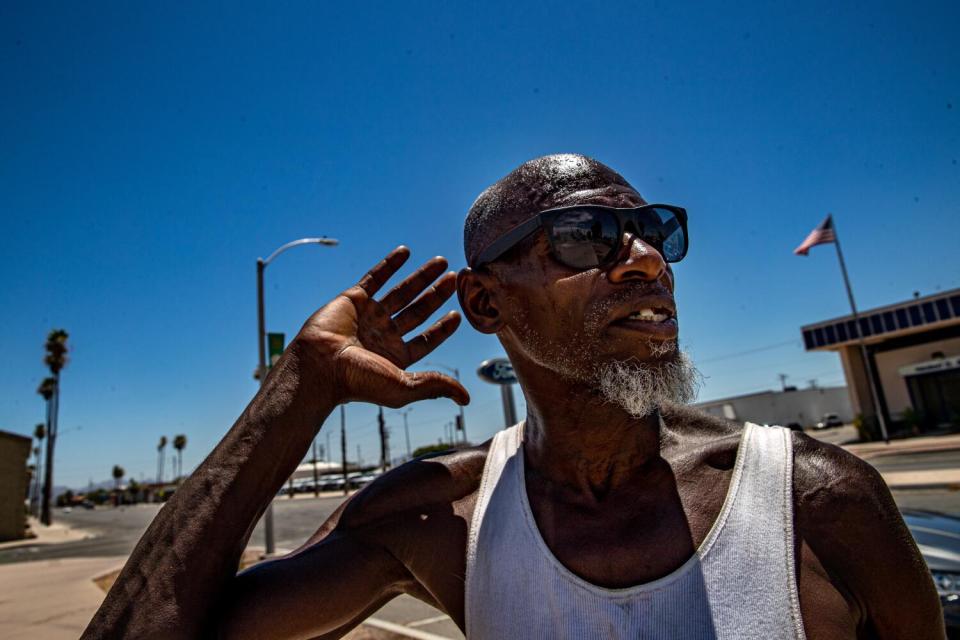
A half-mile away from the agency, Juan Thompson, who is 52 and unhoused, was drenched in sweat as he walked to his aunt’s house, where he hoped to get a break from the sun.
Last summer, Thompson said, he suffered multiple episodes of heatstroke and pneumonia. He tries to stay hydrated by asking for a cup of water from businesses and resting in any shaded area he can find.
“Every day, I pray to God that I make it,” he said. “It’s a miserable life out here.”
Nearby, under the terrace of an abandoned cafe, Dray Taijer, 59, looked over a sixth-grade school workbook he dug out of the trash. He was shirtless and barefoot, his cargo shorts held up by a makeshift belt made from a grocery bag.
His backpack sat next to him with a wooden cross poking out of the top. His wet shoes dried in the sun.
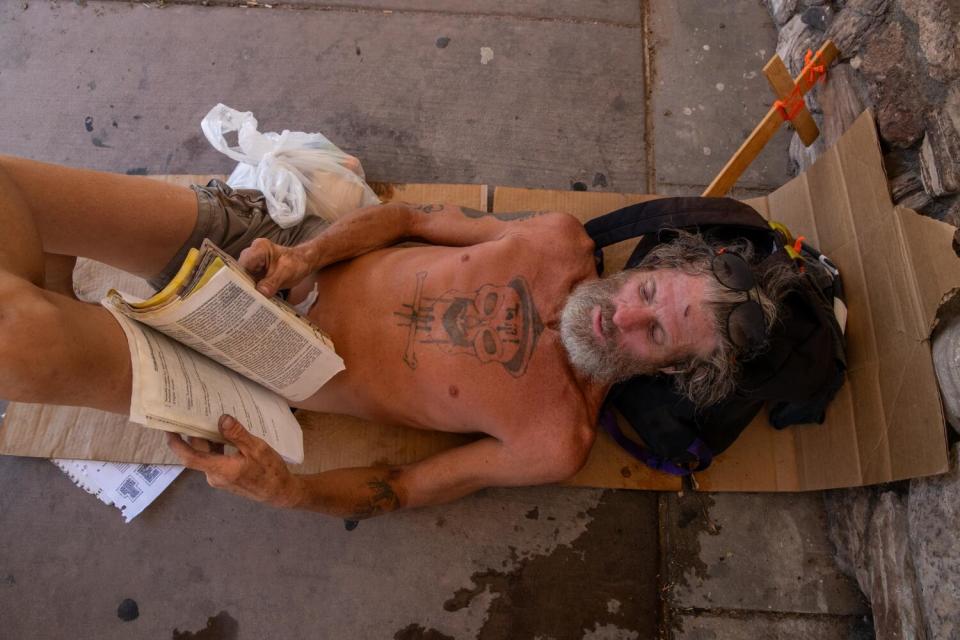
Taijer has lived in Blythe, or what he calls "the world's smallest town," for about a year.
He said he can't leave Blythe — or its heat — because he's on probation for threatening customers in the Del Taco parking lot while he was searching through the trash.
The previous week, Taijer passed out in front of a gas station in the heat after consuming cough medicine, he said. Hoping to avoid a repeat of that day, Taijer drenched himself with water at a children's splash pad in a city park.
He was drying up under the terrace when Lopez-Padilla approached him, offering him a bag of food and a ride to the church if he wanted one.
Taijer accepted the food and said he would possibly show up at the church later in the day.
Read more: Here's what parts of L.A. County saw biggest rise in homelessness
Back at the church, Johnson and Mitchell showered and waited for Lopez-Padilla to drive them back to the Lost City.
Johnson said he was grateful for the church in this extreme heat.
A few years ago, he said, the sun's rays wouldn’t feel too intense until about 9 a.m. Now, he said, it's boiling by 6 a.m.
About 12 people live at the Lost City encampment, which is a half-mile from a canal where they bathe, swim and keep cool — if they can handle the walk, which has no shade and gets dangerously hot.
Johnson said water bottles don’t last long. They get so hot in the sun, he said, that they can be used to cook ramen noodles.
Every day, Johnson heads into the city in search of recyclables to sell so that he can use the money to buy water, food and a bag of ice for his friends at the encampment.
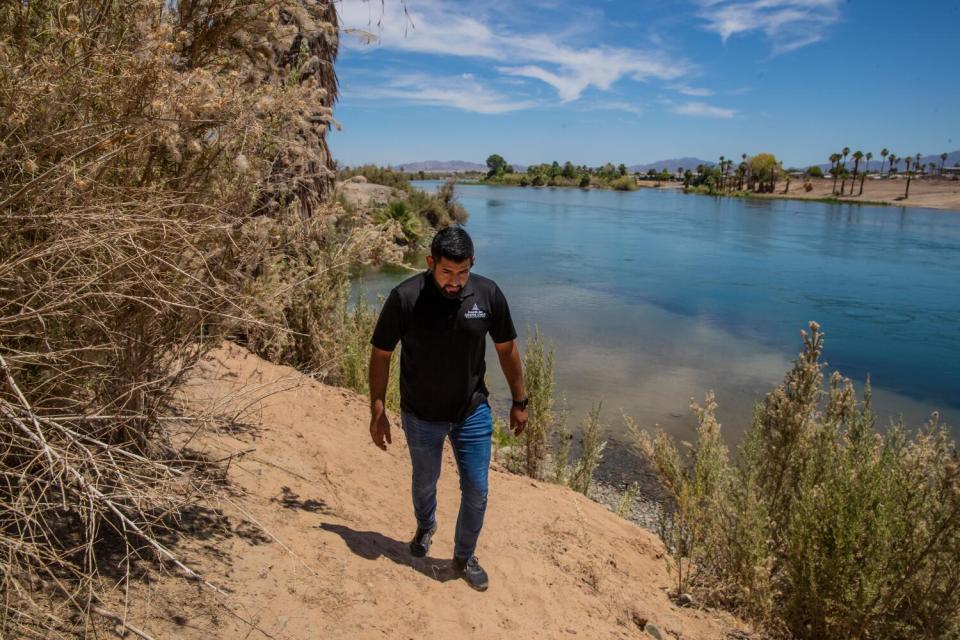
“I gotta help keep these people alive,” he said. “No one else will."
It's especially tough when there’s no money to purchase water, ice or food. That happened this past Tuesday.
“We suffered,” he said. “My tongue swelled up, I couldn’t talk because it was so dry and nasty and the [bottled] water was so warm.”
The conditions were so unbearable last week that he lied to his neighbors, saying he was going to go out and get water and ice.
“I don’t lie, but I had to lie to make them feel better and that we were going to get through this,” he said. “It’s terrible.”
This story originally appeared in Los Angeles Times.

